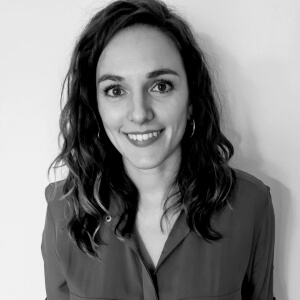When to Put Your Baby On Their Tummy?


Written and verified by the physiotherapist Maria Elisa Lisotti Luppi
It’s very common for mothers to receive advice about putting their baby on their tummy, but when should you start? How can you do it safely? And what do you need to take into account? In the following paragraphs, we’ll answer all of these questions and give you the keys to start putting your baby on their tummy.
We can observe the maturation of the baby’s nervous system through the skills they acquire during their growth. Their psychomotor development has a visible and determined sequence. First, they begin to develop head and neck control, then they continue to strengthen their spine and trunk. Later, they strengthen and control their limbs.
Keys to start putting your baby on their tummy
It’s advisable to start putting your baby on their tummy 30 days after birth. This is because, from this position, the child begins to slightly extend their neck. This activity should be done while the baby is awake and always under the caregiver’s supervision.

- Provide a safe space: preferably on the floor, on a cushioned area, ensuring that it’s free from dangerous objects, is uncluttered and contains few toys, and is adapted to the child’s age.
- Be patient: in the beginning, some babies resist this position. It’s a matter of starting slowly, allowing them the time they need to adapt.
- Respect your baby’s needs: if your child is hungry, sleepy, or needs a diaper change, for example, we must take care of that first. Then find the right time for the activity.
- Start doing it for short periods of time: some babies enjoy their tummy time from the very beginning. If this isn’t the case, it’s advisable to start gradually, for a few minutes, and then increase slowly and progressively as the baby allows it.
- Know the stages of development and take them into consideration: this will give you more tools to know what to observe and how to stimulate the infant at each stage.
What does a baby lying on their tummy look like at each stage?
We can predict the child’s psychomotor development according to how they’re positioned on a surface and the movements they manage to perform in that position. In this case, we’ll talk about the characteristics of the prone position in the first six months of life.
First month
In the first month, the baby is positioned with their legs bent and their knees under the trunk or slightly separated from it. The baby’s head is almost always on its side and they can begin to raise their head to change sides. Their arms are flexed and their trunk follows the position of their head.
Second month
At two months, they begin to kick alternately with their legs. In addition, they place their forearms on the ground to support themselves, although their arms are still unstable. They can elevate their heads somewhat, with some wobbling and without exceeding 45 degrees. The extension of the neck now reaches the level of their shoulder blades.
Third month
A three-month-old baby’s able to raise its head more than 45 degrees without difficulty. They’re able to lean on their forearms and move their head freely. Their legs continue with some flexion, but they’re more able to extend them. At this age, they’re kicking alternately and their ankles are more mobile.
Fourth month
At four months, they raise their head up to 90 degrees and they support themselves on their forearms with greater arm stability. Also, they open and close their hands voluntarily. They achieve the “swimmer’s pose” by lengthening their abdominals and stretching their arms and legs simultaneously.

Fifth month
At five months, the baby moves their head smoothly from side to side. Their hips are flatter and they begin to crawl in various directions. They use the support of their forearms to move.
Sixth month
At the end of the second trimester of life, the baby is able to handle forearm support more easily, so they try to push off on their hands and extend their elbows. This allows them to unload the weight of their body on one arm to free the other and thus reach an object. At this age, the child can turn from face down to face up, without help. Progressively, they’ll do so with greater dexterity.
The child’s functional skills continue to develop. Every day, they’ll gain more strength and balance and, therefore, more control in their movements. Months later, they’ll be able to voluntarily change position from lying down to sitting, and then to standing up and getting ready to walk.
Putting the baby on his tummy as a form of stimulation
Putting a baby on their tummy in their first months of life is an energy-intensive activity for them. He must work with their whole body to free their airway as a means of survival. It’s not a simple position, on the contrary, it’s complex training.
Therefore, they must be given the necessary time and patience, in a safe space adapted to the child, respecting their needs, and taking into account their age. The child must be observed and accompanied, and this should be a moment of play and enjoyment for both the baby and their caregivers.
It’s very common for mothers to receive advice about putting their baby on their tummy, but when should you start? How can you do it safely? And what do you need to take into account? In the following paragraphs, we’ll answer all of these questions and give you the keys to start putting your baby on their tummy.
We can observe the maturation of the baby’s nervous system through the skills they acquire during their growth. Their psychomotor development has a visible and determined sequence. First, they begin to develop head and neck control, then they continue to strengthen their spine and trunk. Later, they strengthen and control their limbs.
Keys to start putting your baby on their tummy
It’s advisable to start putting your baby on their tummy 30 days after birth. This is because, from this position, the child begins to slightly extend their neck. This activity should be done while the baby is awake and always under the caregiver’s supervision.

- Provide a safe space: preferably on the floor, on a cushioned area, ensuring that it’s free from dangerous objects, is uncluttered and contains few toys, and is adapted to the child’s age.
- Be patient: in the beginning, some babies resist this position. It’s a matter of starting slowly, allowing them the time they need to adapt.
- Respect your baby’s needs: if your child is hungry, sleepy, or needs a diaper change, for example, we must take care of that first. Then find the right time for the activity.
- Start doing it for short periods of time: some babies enjoy their tummy time from the very beginning. If this isn’t the case, it’s advisable to start gradually, for a few minutes, and then increase slowly and progressively as the baby allows it.
- Know the stages of development and take them into consideration: this will give you more tools to know what to observe and how to stimulate the infant at each stage.
What does a baby lying on their tummy look like at each stage?
We can predict the child’s psychomotor development according to how they’re positioned on a surface and the movements they manage to perform in that position. In this case, we’ll talk about the characteristics of the prone position in the first six months of life.
First month
In the first month, the baby is positioned with their legs bent and their knees under the trunk or slightly separated from it. The baby’s head is almost always on its side and they can begin to raise their head to change sides. Their arms are flexed and their trunk follows the position of their head.
Second month
At two months, they begin to kick alternately with their legs. In addition, they place their forearms on the ground to support themselves, although their arms are still unstable. They can elevate their heads somewhat, with some wobbling and without exceeding 45 degrees. The extension of the neck now reaches the level of their shoulder blades.
Third month
A three-month-old baby’s able to raise its head more than 45 degrees without difficulty. They’re able to lean on their forearms and move their head freely. Their legs continue with some flexion, but they’re more able to extend them. At this age, they’re kicking alternately and their ankles are more mobile.
Fourth month
At four months, they raise their head up to 90 degrees and they support themselves on their forearms with greater arm stability. Also, they open and close their hands voluntarily. They achieve the “swimmer’s pose” by lengthening their abdominals and stretching their arms and legs simultaneously.

Fifth month
At five months, the baby moves their head smoothly from side to side. Their hips are flatter and they begin to crawl in various directions. They use the support of their forearms to move.
Sixth month
At the end of the second trimester of life, the baby is able to handle forearm support more easily, so they try to push off on their hands and extend their elbows. This allows them to unload the weight of their body on one arm to free the other and thus reach an object. At this age, the child can turn from face down to face up, without help. Progressively, they’ll do so with greater dexterity.
The child’s functional skills continue to develop. Every day, they’ll gain more strength and balance and, therefore, more control in their movements. Months later, they’ll be able to voluntarily change position from lying down to sitting, and then to standing up and getting ready to walk.
Putting the baby on his tummy as a form of stimulation
Putting a baby on their tummy in their first months of life is an energy-intensive activity for them. He must work with their whole body to free their airway as a means of survival. It’s not a simple position, on the contrary, it’s complex training.
Therefore, they must be given the necessary time and patience, in a safe space adapted to the child, respecting their needs, and taking into account their age. The child must be observed and accompanied, and this should be a moment of play and enjoyment for both the baby and their caregivers.
All cited sources were thoroughly reviewed by our team to ensure their quality, reliability, currency, and validity. The bibliography of this article was considered reliable and of academic or scientific accuracy.
-
Amorós, Y. C., García, I. M. R., García, M. A. M., Ruiz, S. R., García, J. M. S., & Millán, E. B. Actuación de la fisioterapia en tortícolis muscular congénita. Cuidados, aspectos psicológicos y actividad física en relación con la salud Volumen II, 113.
- Benito, F. C., & de la Rosa, J. L. Plagiocefalia posicional: nuevas recomendaciones para el diagnóstico precoz y registro en la cartilla sanitaria del niño. https://www.aeped.es/sites/default/files/documentos/libro_blanco_muerte_subita_3ed_1382444179.pdf
- Díaz, M. M. (2019). Episodio aparentemente letal y muerte súbita. PediatríaIntegral, 37.
- https://cdn.pediatriaintegral.es/wp-content/uploads/2019/xxiii01/04/n1-037-045_MariaMartin.pdf
- Fajardo, Zila Isabel Esteves, Mariana Isaura Avilés Pazmiño, and Ángel Alberto Matamoros Dávalos. “La estimulación temprana como factor fundamental en el desarrollo infantil.” Espirales revista multidisciplinaria de investigación 2.14 (2018).
- Murcia González, M. A. (2007). Plagiocefalia posicional: Exploración y tratamiento de fisioterapia. Revista de Fisioterapia, 6(2). http://repositorio.ucam.edu/bitstream/handle/10952/394/FISIOTER2007-6-2-35-44.pdf?sequence=1&isAllowed=y
- Nuñez Herrera, Yovani. “Estimulación motora en niños de 0 a 4 años.” (2018).
- López, Lizbeth Luna, Ana María Baltazar Ramos, and Eduardo Alejandro Escotto Córdova. “Estimulación del desarrollo psicológico en el primer año de vida.” INTERVENCIONES PSICOLÓGICAS: 11.
- Laguna Villafranco, Enriqueta. “Influencia dela posición prona en la saturación de oxigeno del recién nacido prematuro del Hospital Regional Docente de Trujillo.” (2019).
- Murcia González, M. A. (2007). Plagiocefalia posicional: Exploración y tratamiento de fisioterapia. Revista de Fisioterapia, 6(2). http://repositorio.ucam.edu/bitstream/handle/10952/394/FISIOTER2007-6-2-35-44.pdf?sequence=1&isAllowed=y
- Tarducci, Gabriel, et al. “Actividad física en infantes de 0 a 5 años: Actualización de las recomendaciones basadas en OMS.” 13 Congreso Argentino de Educación Física y Ciencias 30 de septiembre al 4 de octubre de 2019 Ensenada, Argentina. Educación Física: ciencia y profesión. Universidad Nacional de La Plata. Facultad de Humanidades y Ciencias de la Educación. Departamento de Educación Física, 2019.
- Rodríguez Arévalo, Ingrid Tatiana, and Lady Nathalia Torres Pinzón. Conocimientos, actitudes y prácticas de padres de niños prematuros sobre el desarrollo motor. Una revisión sistematizada de literatura. BS thesis. Universidad de La Sabana.
This text is provided for informational purposes only and does not replace consultation with a professional. If in doubt, consult your specialist.








